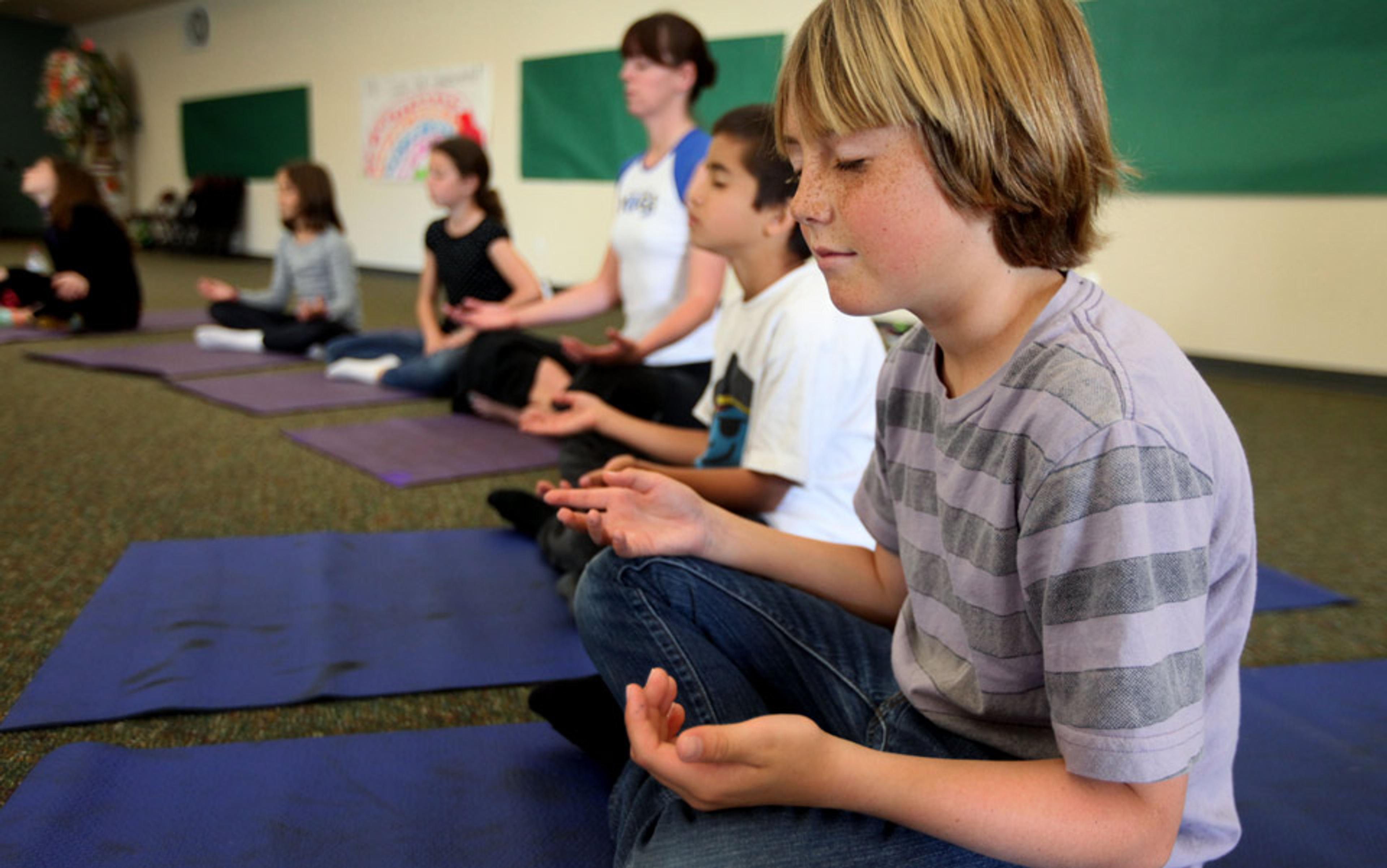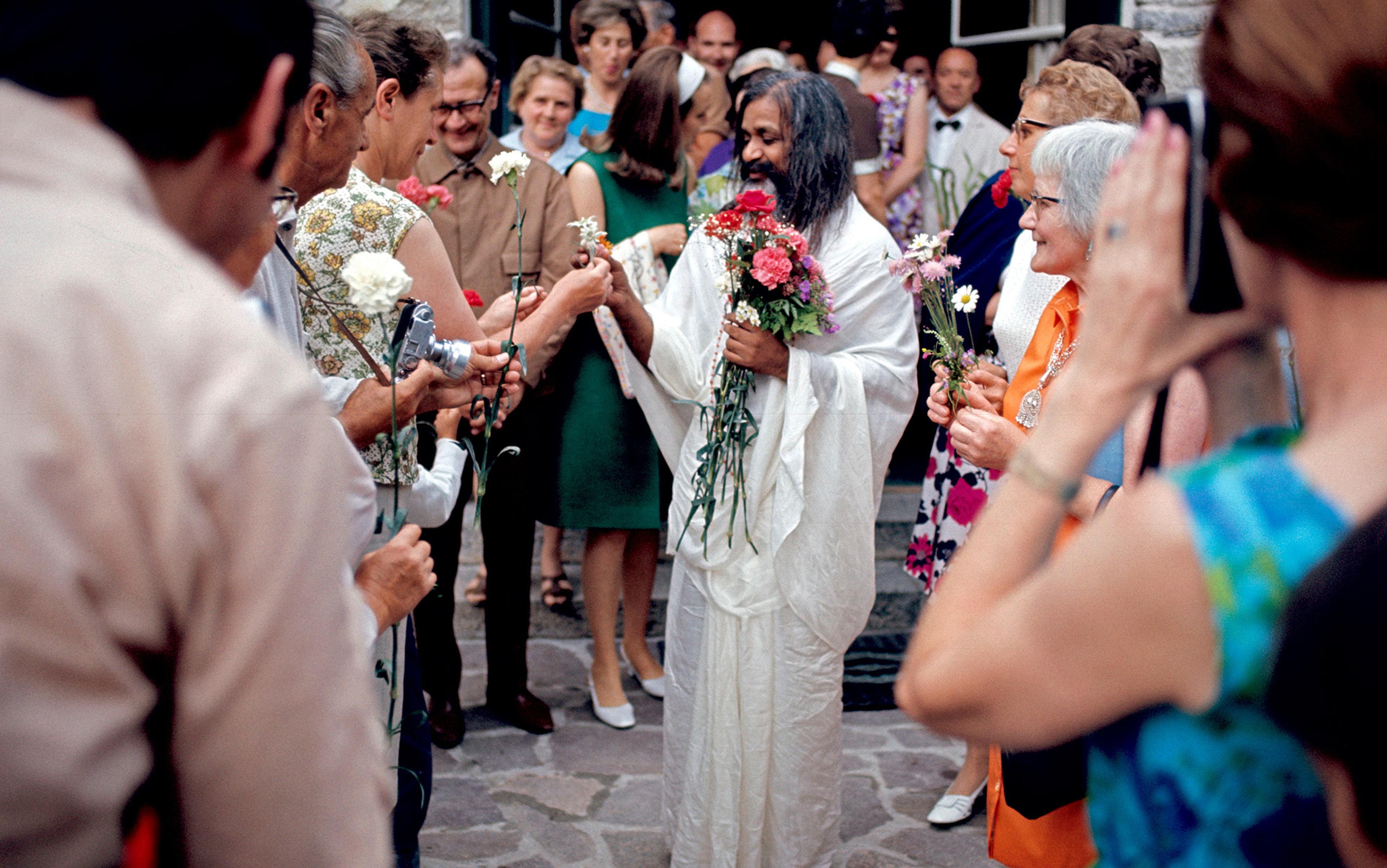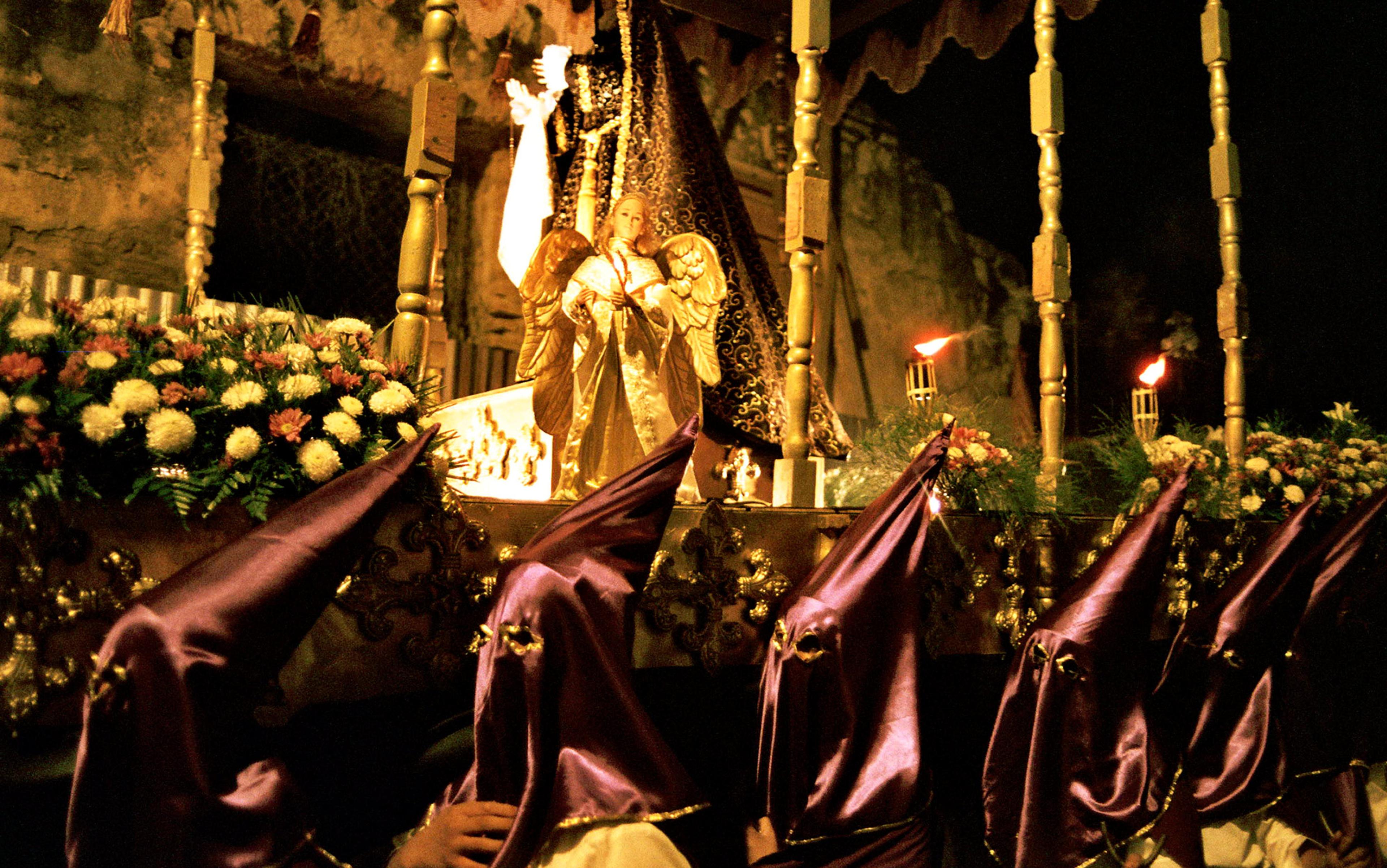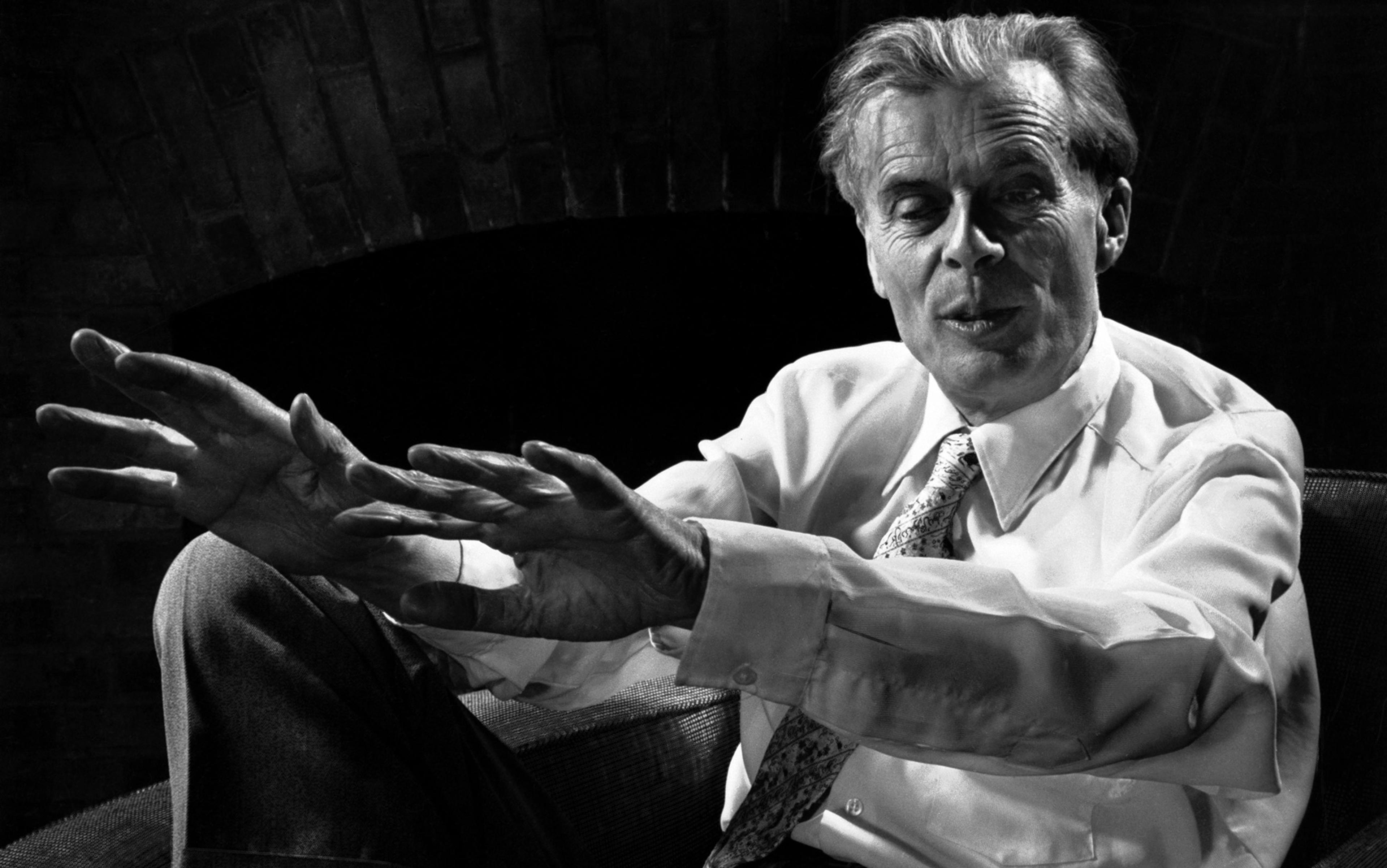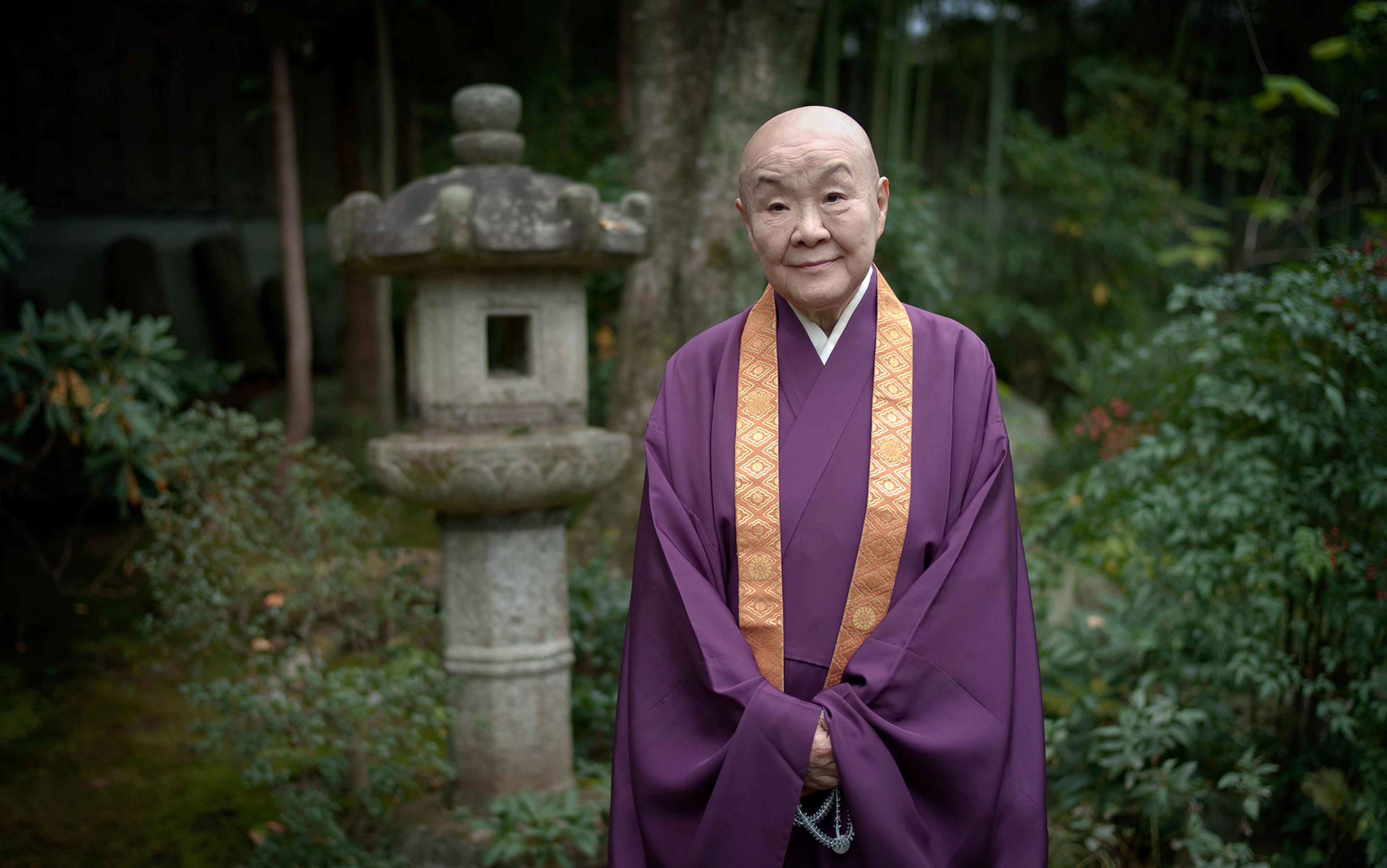I started practising yoga 12 years ago at a newly opened studio in San Francisco called the Yoga Tree. One day, I was coming out of a back bend — ustrasana, or camel pose, to be exact — when my bodymind abruptly and briefly fluttered into a tingling otherworld of uncanny and dizzying bliss. After the class, I asked the teacher about the experience, curious about how he’d parse my trippy little altered state. ‘Probably low blood pressure,’ he said. ‘Coming out of backbends can restrict your blood flow. You might want to watch that.’
I paused. ‘This wasn’t just a head rush. It was like, uh … have you ever had a big balloon of nitrous oxide?’
‘Ah,’ he said, and launched into telling me about the nadis. ‘These are channels in the body that carry prana,’ he explained, referring to Hinduism’s version of élan vital. ‘They are the cause of a lot of openings.’
At the time I was struck by the fluid ease with which my teacher switched from Western physiology to Eastern esotericism. It spoke to how we postmoderns have grown comfortable shifting between different, even contradictory world views. But it also said something about the contemporary world of postural yoga, and how it has come to bridge (and occasionally tunnel between) the sacred and the secular. Sometimes yoga practitioners set these two frames of reference alongside one another, as my teacher did; other times they superimpose them onto various squirrely frameworks of ‘spiritual science’. For some, asana is unquestionably prayer; for others, it just beats the gym. Yoga’s special trick is to elude these apparent contradictions by inviting folks to shut up, get on the mat, and follow the flow. ‘Yoga is 99 per cent practice, and one per cent theory,’ proclaimed the late Indian yoga master Sri Krishna Pattabhi Jois, who founded the vigorous style of yoga known as Ashtanga, in Mysore, in 1948.‘Practise, and all is coming.’
One thing that Jois probably did not see coming, however, was the conscription of yoga into America’s culture wars. As I write, a public school district in California is being sued by Christian parents and a conservative legal watchdog group for teaching yoga to children aged six to 11 as part of their physical education programme in elementary school. The suit argues that the programme is ‘inherently and pervasively religious’ and, as such, that it violates the state’s religious freedom clauses. The mediating ambiguity of yoga’s ‘sacred science’ is being forced through the binary, yes-or-no code of a legal system charged with safeguarding the US’s constitutional separation between church and state.
They complained about the ostracism of children who opted out of the programme — a situation one fool compared to Nazi Germany
Jois would have been particularly struck by the location of the battle. Encinitas, a small beach community north of San Diego, was the inaugural American home of Ashtanga in the mid-1970s. Developed from the teachings of Tirumalai Krishnamacharya, the fountainhead of modern Hatha yoga, Jois’s rigorous Ashtanga school invites practitioners to submit to an unwavering sequence of gnarly poses and taxing transition moves. Though there is little overt discussion of Hindu philosophy in typical Ashtanga studios, the form itself engenders and radiates an unmistakable quality of spiritual discipline and meditative focus. Ashtangis practise most mornings in nearly silent rooms, progressing through the sequence of asanas at an individual pace, while often developing a quality of sober devotion that, while not always easy to distinguish from Type-A obsession, attests to the psychological as well as physically transformative effects of the regimen.
One person whose life and body were transformed by Ashtanga is the Australian model Sonia Jones, wife of the American multi-billionaire hedge-fund manager Paul Tudor Jones II. Following the death of Jois, Sonia — to the grumbling of some long-term practitioners — entered into a partnership with Jois’s heir-apparent, his grandson Sharath. What emerged is ‘Jois Yoga’, a codification of the Ashtanga brand, accompanied by a new line of yoga wear. Jones and the Jois family have also established a handful of slick Jois Yoga shalas, or studios, around the US — including a new location in Encinitas that some old hands see as a slap in the face to the old-school Ashtanga studio that had been in town since the 1970s.
The Joneses meanwhile established the non-profit K P Jois Foundation, which has already provided millions to set up the Contemplative Sciences Center at the University of Virginia in Charlottesville. The foundation also funnelled $533,000 into setting up twice-weekly, 30-minute yoga programmes for elementary schools in the Encinitas Union School District (EUSD). But the programme stuck in the craw of some parents and in October a small number of them — evangelical Christians, backed by the conservative National Center for Law and Policy (NCLP) — came before the school board. They complained about the use of the Buddhist mandala symbol in art class, the introduction of physical poses ‘imparted by Hindu deities’, and the ostracism of children who opted out of the programme — a situation one fool compared to Nazi Germany. The school board, puzzled by this religious interpretation of stretching exercises, and no doubt enjoying the bounty of external funding, refused to cave in. So in February, the NCLP filed a suit against the district on behalf of one pair of parents, Stephen and Jennifer Sedlock.
That’s not how these court battles usually go — even in California, whose New Age-friendly coast is pocketed with mega-churches and fiercely conservative communities, especially in the interior of the state. When the issue of religion and public schools comes up, it’s generally because evangelical activists are trying to slip religious messages into public school, with atheists and freethinking parents invoking the First Amendment. In Encinitas, the tables are turned: now the Biblical conservatives are thumping on the very same secular cornerstone they are more usually trying to slip around.
As the journalist Katherine Stewart pointed out in a sharp post on Religion Dispatches, the head attorney at NCLP acting for the Sedlocks — Dean Broyles — is affiliated with a powerful right-wing legal organisation called the Alliance Defending Freedom. The ADF litigates on behalf of evangelical activity in public schools, which includes abstinence programs, ‘character education’ curricula, and after-school bible study groups for elementary pupils, called Good News Clubs. Stewart, who has written a book about the use of public schools to advance a fundamentalist Christian agenda, noted that all of the schools in the Encinitas district already host Good News Clubs, which gives you a taste of how much religion — Christian religion that is, or at least Christian moralising — already exists in or around public schooling.
The Encinitas case is a different kettle of loaves and fishes. Rather than combating secularism, activist Christians are now indirectly taking on another religion, a religion that, they argue, is disguised as secular physical culture, and is, in their terms at least, false. This battle is not just taking place in the courtroom: it is a war of the religious imagination.
In January, National Public Radio covered the controversy. Its report featured Mary Eady, an Encinitas parent, convinced that Hindu religious goals were being inculcated alongside the stretching moves. Eady complained that immediately before performing the sun salutes that so often open yoga routines, pupils were told ‘to thank the sun for their lives and the warmth that it brought’. Most parents (and readers) would barely register this innocuous story-book sentiment. But Eady, deploying the sort of paranoid hermeneutics that fire evangelical worries against product labels or ‘backwards-masked’ messages in rock music, believes that children were being told to worship the sun. Moreover, Eady suggested that behind the program lurked a shadowy, hedge-fund-backed foundation whose founders believe in the spiritual benefits of Ashtanga yoga.
But let us reverse the mirror, and ask what sort of religion lurks behind Eady’s complaints, and what shadowy religious organisations might stand behind her concerns that children are being lured into sun worship? As the yoga writer Carol Horton noted in a blog from February, Eady happens to be a project manager at truthXchange, an evangelical organisation whose raison d’etre is to halt the spread of ‘global paganism’. The organisation’s worldview, to judge from their website, is blunt and Manichaean: the choice we face is between the idolatrous worship of the universe itself (‘One-ism’) or the proper worship of the creator outside the universe (‘Two-ism’).
One important corollary to this formula is that both the ‘pagan’ (and presumably ‘Hindu’) worship of natural forces and science’s insistence on a purely material cosmos are two sides of the same hell-bent coin. As such, yoga’s already precarious mediation between sacred and secular, body and mind, simply makes the practice even more suspicious. Even goals such as ‘wellbeing’ and ‘stress management’ can become red flags. ‘It’s stated in the curriculum that [yoga is] meant to shape the way that they view the world,’ Eady told NPR. ‘It’s meant to shape the way that they regulate their emotions and the way that they view themselves.’
In the face of such overripe suspicions, the school board, along with representatives from the K P Jois Foundation, have insisted that the yoga program is a purely athletic regimen shorn of religious elements. The majority of press reactions and op-eds adopt a similar line, scoffing at evangelical worries about touching your toes. In a superficially secular society like the US, officially beholden to science, these reactions make sense. Most casual yoga practitioners would be taken aback by the accusation that participation in mindful stretching routines makes them acolytes of an exotic faith. Ironically, the judge in the case turned out to be one such practitioner. Surprising the courtroom by announcing last month that he had recently begun practising Bikram (‘sweaty’) yoga, Judge John Meyer noted that: ‘If you think there’s something spiritual about what I do, that’s news to me.’
American asana practice has been oscillating between the ashram and the gym, sometimes clothed in exotic veils and other times in low-cut spandex
Many yogis would understand the judge’s puzzlement, since Bikram yoga, with its mirror-lined studios and trademarked sequence, is often cast as the epitome of profane and commercialised yoga. For countless practitioners, modern yoga is purely this-worldly, at most lending a holistic sheen to the consumer quest for a better butt. But yoga can be, and quite often is, something more. Many teachers — far too many, I feel — lace their chat with New Age nostrums, and the décor in lots of studios suggests a vaguely exotic, mystic ambience. But yoga’s spiritual juice does not ultimately lie in coffee-table books explaining Hindu philosophy, or the statues of the great Lord Ganesha by the door. As Horton and other yoga bloggers who are wrestling with this case have come to admit — and in contrast to the EUSD’s argument that the children are just stretching — deep experience of the discipline does tend to transcend physical culture, though often in ways that are difficult to articulate. On this point, the conservatives running the NCLP might be ready to agree.
The specific legal question, however, is whether the Jois curriculum’s particular mix was ‘religious’. To bolster their case, the NCLP recruited the Harvard-educated academic Candy Gunther Brown, an associate professor of religion at the University of Indiana. Though Brown herself studies evangelicals and healing prayer, her 37-page brief for the NCLP rightly recognises that today’s postural yoga evolved out of a complex mixture of medieval Hatha yoga, modern Hindu revival movements, British physical culture, and Western metaphysical traditions — the same hydra-headed current of occult lore, Theosophy, and self-help philosophies that birthed the ‘New Age’. Brown’s error lies in unreflexively labelling this decidedly modern mélange ‘religion’ — a Latin Christian term inextricably linked to Christianity’s self-image as the dominant global system of creed, sacrament, and congregation. It is not clear how adequately the term ‘religion’ covers the classic Hindu world, let alone the mutant modern offspring of one limb of that dizzying tradition.
What if modern postural yoga is neither religious nor secular, but something in between, or something beyond, something whose evident appeal partly lies in that very liminality? As Stefanie Syman shows in The Subtle Body (2010), her history of yoga in the US, American asana practice has been oscillating for more than a century between ashram and gym, sometimes clothed in exotic veils and other times in low-cut spandex. It is this very oscillation — a flux incarnated for many practitioners every time they hit the mat — that ‘is’ yoga.
Oscillations are tough to read: now you see it, now you don’t. For her part, Professor Brown indulges in plenty of feverish literalism, describing the sun salute as ‘consistent with religious worship’, and characterising the integration of breath into physical movement as a kind of gateway drug that ‘prepares one to unite with the Universal in Samadhi’. (If only it were so easy!) Other arguments that initially look like Christian conspiracy theory, however, carry more than a few grains of truth. Brown notes that, in much apparently ‘secularised’ yoga, novices first enjoy the physical benefits of the workouts and then begin to receive ‘spiritual nuggets’ from teachers, nuggets that lead deeper into the Hindu worldview.
Setting aside the nefarious implications Brown intends, some version of this process occurs all the time. Most yoga teachers are quite comfortable presenting the practice in layers of increasing esoterica. Eventually, at least in my experience, the physical bandhas (contractions) flower into imaginal chakras — and head-rushes get reframed as nadi shudders. But what’s interesting about Brown’s argument — in a sense the key to the Christian evangelists’ fear of yoga — goes beyond religious discourse entirely. Brown claims that the Encinitas yoga curriculum advances Hindu and American metaphysical religion ‘whether or not these practices are taught using religious or Hindu language’. In other words, the spiritual power — and threat — does not lie within the discourse packaging the moves, but in the moves themselves.
Though I suspect it’s wrong, I love this idea. I love it because it inspires the fantasy that somewhere, somehow, some stressed-out car dealer or soccer mom is going to take a yoga class at a gym (maybe because the instructor is cute) and then, halfway through practice — maybe while stretching in pigeon pose, or teetering on elbows in crow — the serpent kundalini unwinds her tail, and a fountain of pranic bliss shoots up his or her spine and blooms into a third-eye-opening shudder of wind-chimes and astral rose petals.
Brown means something a little more down to earth, of course. She claims that, in contrast to Protestant concerns with the word, Eastern religions express devotion directly through practices that fuse body and mind. The physical practices drawn from those traditions can never be stripped of religion, because the religion — others would say ‘spirituality’ — already lies in the embodiment. This is a deeply conservative view of religious meaning, with little appreciation for how modern practitioners change these embodied meanings, to say nothing of the interventions of MRI scanning and other tools quantifying the psycho-physiological effects of yoga and meditation. But Brown’s view does paradoxically, and ironically, accord with leading fantasies that Western seekers hold about their yoga practice, which romantically contend that today’s postural sequences stretch back continuously through time immemorial, carrying the transmission of the ancient sages.
Fortunately, the spiritual efficacy of yoga goes beyond the purview of the courts, whether or not that power is interpreted as summum bonum or a demonic lure. But as far as Brown’s critique of the Encinitas curriculum itself goes, I have to say that, as a devotee of the First Amendment, I share some of her concerns. The devil is in the detail, and if Brown’s description is accurate, then the K P Jois Foundation and its school district partners could have done a better job of stripping spiritual language and religious glyphs — Chinese t’ai chi, the yin/yang symbol, or a chart of Patanjali’s Eight-Fold Path — from their materials.
That said, I don’t believe the foundation was trying to smuggle ‘Hindu philosophy’ through the back door, let alone the sun god Surya. They didn’t think their materials would piss people off, because holistic language and ‘Eastern’ imagery has become the norm as people embrace a wide range of healing modalities, and more and more of us identify as ‘spiritual but not religious’. The real issue is that modern yoga and meditation do create real psychobiological changes, and that those changes are coming to be seen as no longer intrinsically religious or spiritual. As the religious historian Catherine Albanese, argues, one way that the American metaphysical tradition succeeded was by simply dissolving into the culture at large. The mind-over-matter religion of Christian Science, for example, flows directly into corporate self-help seminars. Even the plaintiff in the EUSD case, Jennifer Sedlock, is tainted by this stuff: a Christian motivational speaker, she is also a ‘qualified Myers-Briggs consultant’ — a psychological typology system directly based on the ideas of the deeply esoteric (and rather anti-Christian) Carl Jung.
Pop metaphysics has become the air we breathe, whether or not we try to synch it up with downward dog.
